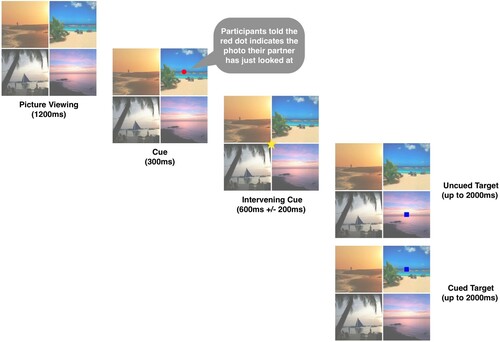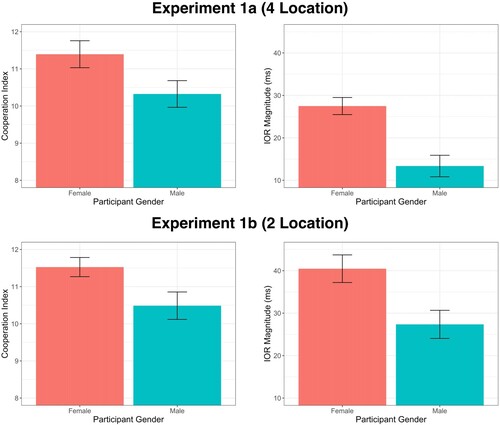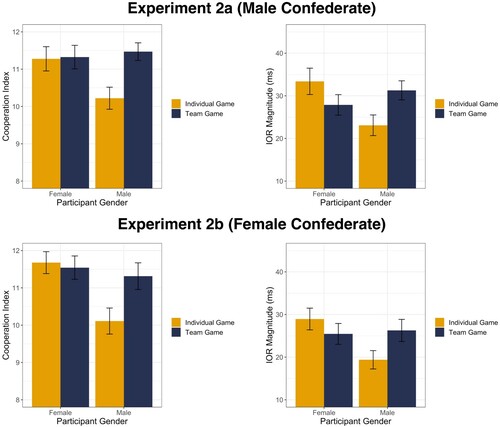Figures & data
Figure 1. Joint spatial cuing paradigm trial structure used for all experiments (4 location display shown). Participants were first presented with an array of photos (2 for Exp. 1b, 4 for Exp. 1a, 2a & 2b), following which a red dot cue was presented in the middle of one of the photos. Participants were told that this indicated the photo their playing partner just looked at and as such was imbued with social meaning. After an intervening cue that returned attention back to the centre of the display, participants were instructed to respond as quickly as possible to the appearance of a blue square, which could appear at a cued or uncued location.

Figure 2. Example screenshots showing the procedural set up for the online joint spatial cuing task. Participants first “met” another participant online (a pre-recorded video of a confederate) with their webcam turned on (top left; image depicts authors for illustration). Participants then logged into the game within a shared screen zone, enabling them to view their partner (pre-recorded) doing the same (top right). Next, participants completed a webcam calibration sequence while viewing their partner (pre-recorded) do the same (bottom left). Finally, participants entered the game and completed the joint spatial cuing task believing that the red dot represented their partner’s gaze location (bottom right).

Figure 3. (A) (Top Left). Perceived cooperation of the social interaction as a function of participants' gender in Experiment 1a. Error bars represent SEM. (B) (Top Right). Inhibition of return effects as a function of participants’ gender in Experiment 1a. Error bars represent SEM. (C) (Bottom Left). Perceived cooperation of the social interaction as a function of participants’ gender in Experiment 1b. Error bars represent SEM. (D) (Bottom Right). Inhibition of return effects as a function of participants’ gender in Experiment 1b. Error bars represent SEM.

Figure 4. (A) (Top Left). Perceived cooperation of the social interaction as a function of game context and participants’ gender in Experiment 2a. Error bars represent SEM. (B) (Top Right). Inhibition of return effects as a function of game context and participants’ gender in Experiment 2a. Error bars represent SEM. (C) (Bottom Left). Perceived cooperation of the social interaction as a function of game context and participants’ gender in Experiment 2b. Error bars represent SEM. Figure (D) (Bottom Right). Inhibition of return effects as a function of game context and participants’ gender in Experiment 2b. Error bars represent SEM.

Table 1. Mean RTs in ms (with SEM) for Experiment 1 and 2.
Data availability statement
The data and analysis code that support the findings of this study are openly available in the OSF at http://doi.org/10.17605/OSF.IO/72RMF.
